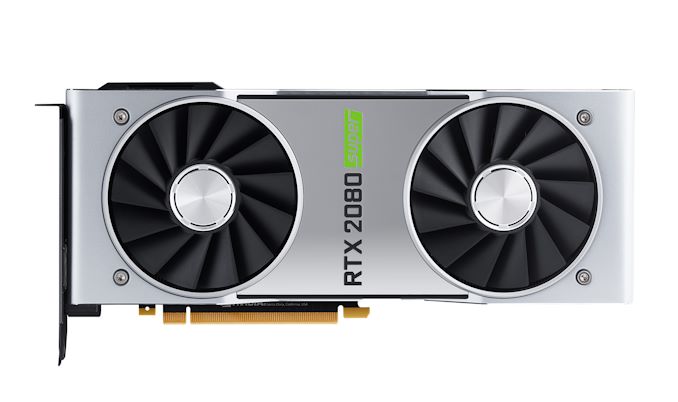
The last two months have been a period of tit-for-tat in the PC video card industry. Both AMD and NVIDIA have been going back and forth, making announcements and launching products as part of a broader restructuring of the mid-range and high-end video card markets in response to the launch of AMD’s Radeon RX 5700 series of video cards. Performance is going up while last-minute maneuvering has brought prices slightly down, all the while the two major players in the GPU space look to solidify their product lineups and secure their competitive edge against their competition.
For all practical purposes, NVIDIA’s GeForce RTX 20 Super series has been the company’s response to AMD’s new video cards. A combination of a mid-generation kicker and a product stack realignment to go head-to-head with AMD, the Super cards have given NVIDIA’s product lineup a modest performance boost at almost every level. After launching the first two cards in this sub-series early this month with the GeForce RTX 2070 Super and GeForce RTX 2060 Super, NVIDIA is back again to launch the last (?) of the Super cards: the previously announced GeForce RTX 2080 Super.
Since gamers have had a couple of weeks to chew on this one – specs and all – there aren’t any last-minute surprises here. The GeForce RTX 2080 Super is a minor performance bump for what was the GeForce RTX 2080, offering a couple more SMs and higher clockspeeds to push performance a bit higher, while holding the price at $699. Truthfully, it’s not a card that’s going to light the world on fire or set any new performance records; but it’s a card that’s going to deliver better performance than the RTX 2080 did at this point yesterday, and it’s going to restore some breathing room between NVIDIA’s 2070 and 2080 cards, as the new RTX 2070 Super has all but made the vanilla RTX 2080 redundant.
| NVIDIA GeForce RTX 20 Series Lineup | |||
| Card | Price | ||
| GeForce RTX 2080 Ti | MSRP: $999 (Street Price: $1149) |
||
| GeForce RTX 2080 Super | MSRP: $699 | ||
| GeForce RTX 2080 | EOL ($699) | ||
| GeForce RTX 2070 Super | MSRP: $499 | ||
| GeForce RTX 2070 | EOL ($499) | ||
| GeForce RTX 2060 Super | MSRP: $399 | ||
| GeForce RTX 2060 | MSRP: $349 | ||
Unsurprisingly then, the vanilla RTX 2080 is on its way out. As part of the Super card launch, the RTX 2080 and RTX 2070 are being discontinued. So the RTX 2080 Super is for all practical purposes the new RTX 2080. Which is to say the fastest of NVIDIA’s semi-affordable high-end video cards, heir to the 80-card family name, and a part targeted at a mix of 1440p and 4K gaming.
And, as we’ll see, it is both the least and most interesting of the Super card launches.
| NVIDIA GeForce Specification Comparison | ||||||
| RTX 2080 Super | RTX 2080 Ti | RTX 2080 | RTX 2070 Super | |||
| CUDA Cores | 3072 | 4352 | 2944 | 2560 | ||
| ROPs | 64 | 88 | 64 | 64 | ||
| Core Clock | 1650MHz | 1350MHz | 1515MHz | 1605MHz | ||
| Boost Clock | 1815MHz | 1545MHz | 1710MHz | 1770MHz | ||
| Memory Clock | 15.5Gbps GDDR6 | 14Gbps GDDR6 | 14Gbps GDDR6 | 14Gbps GDDR6 | ||
| Memory Bus Width | 256-bit | 352-bit | 256-bit | 256-bit | ||
| VRAM | 8GB | 11GB | 8GB | 8GB | ||
| Single Precision Perf. | 11.2 TFLOPS | 13.4 TFLOPs | 10.1 TFLOPS | 9.1 TFLOPS | ||
| TDP | 250W | 250W | 215W | 215W | ||
| GPU | TU104 | TU102 | TU104 | TU104 | ||
| Transistor Count | 13.6B | 18.6B | 13.6B | 13.6B | ||
| Architecture | Turing | Turing | Turing | Turing | ||
| Manufacturing Process | TSMC 12nm "FFN" | TSMC 12nm "FFN" | TSMC 12nm "FFN" | TSMC 12nm "FFN" | ||
| Launch Date | 07/23/2019 | 09/27/2018 | 09/20/2018 | 07/09/2019 | ||
| Launch Price | $699 | $999 | $699 | $499 | ||
Starting from the top, let’s take a look at the specs. When NVIDIA launched their GeForce RTX 20 series cards last year, the 2080 and 2080 Ti were somewhat conservatively configured; both cards shipped with a few disabled SMs (among other things), which is to say that they utilized less-than-fully-enabled GPUs. This helps with binning, of course, but it also gave NVIDIA some breathing room to bump up their performance should they ever need to. Now, with the RTX 2080 Super, they are doing just that.
For the first time in a GeForce RTX 20 series card, we’re finally getting a fully-enabled TU104 GPU. NVIDIA is enabling the final 2 SMs, adding a further 128 CUDA cores to the pool, for a total of 3072 CUDA cores. With the final two SMs comes their respective PolyMorph engines and RT cores, so the RTX 2080 Super is coming to bat with everything the GPU can offer on the shading, texturing, geometry, and ray tracing fronts. The notable exception here will be on the render backend side of things; RTX 2080 already shipped with all 64 ROPs enabled – as well as the associated L2 cache – so there are no hardware improvements here.
Instead, pushing the card even farther are higher clockspeeds, coupled with a very generous 250W TDP. As RTX 2080 overclockers already know, TU104 can easily sustain clockspeeds higher than NVIDIA’s RTX 2080 reference clocks, however the cost is increased power consumption and all the drawbacks that entails. So for the RTX 2080 Super, the base and boost clocks have been bumped up by 9% and 6% respectively, and the card should now generally be able to sustain 1815MHz (or better) on most games – and this might be a bit conservative. Meanwhile, unlike enabling more SMs, this benefits every facet of the video card, so front-end and back-end performance is all getting faster.
The penalty for this is that the 215W TDP RTX 2080 is being replaced with the 250W TDP RTX 2080 Super. This happens to be the same TDP as the even faster GeForce RTX 2080 Ti, so it’s easy to see where this is going: NVIDIA is bumping up their overall performance, at the cost of some power efficiency. As we’ll see in our benchmarks, the situation is a little more complex than that, but not immensely so. Perhaps the wildest factor here is that unlike the RTX 2080 Ti, the RTX 2080 has trouble actually filling out its 250W TDP; NVIDIA boosted the TDP to ensure the card had sufficient power headroom for higher clocks, and they definitely succeeded. As a result, the card gets to run at full throttle a lot more than the original 2080, or for that matter the 2080 Ti or the 2070 Super.
Faster GDDR6 Memory Comes to Video Cards
But perhaps the most interesting change with the RTX 2080 Super isn’t even the GPU itself, but rather what NVIDIA is doing to feed the beast on the memory front. Since the first GDDR6-equipped video cards launched a year ago, every card has shipped with 14Gbps (or lower) memory. 14Gbps was the fastest speed grade available at launch from the major memory vendors, however it wasn’t the fastest speed grade on the roadmap. 16Gbps memory has been on the drawing board as well, and now with the launch of NVIDIA’s new card, we’re getting our first card with that memory.
For the launch of their new cards, NVIDIA has tapped Samsung’s new 16Gbps, 8Gbit chips for the new cards. With a 256-bit memory bus for the card itself, this keeps the RTX 2080 Super at the same 8GB of VRAM as the original RTX 2080, but it gives the card more bandwidth to play with. However in a rare move for NVIDIA, they’re actually being a bit conservative here on memory clocks – the RTX 2080 Super is only running at 15.5Gbps instead of the 16Gbps the memory is capable of.
According to NVIDIA, the reason for this ultimately comes from their decision to make the Super cards as straightforward a manufacturing upgrade as possible, spec’ing the cards such that board partners (including themselves) can use the same boards and coolers from their vanilla RTX 2080 cards. As a result, the RTX 2080 Super is built on a PCB originally designed and qualified for 14Gbps GDDR6. True 16Gbps memory clocks would seemingly require a new PCB, which for a 3% memory clockspeed bump (and less on performance) is not something board makers are going to want to spend the money on.
To be sure, I’ve clocked our card to 16Gbps with ease and without any problems; but then our standards for stability are not as high as NVIDIA’s (never mind mass production concerns). So for curious overclockers, there is a bit more memory headroom to play with here, with the usual warnings about overclocking. Meanwhile for everyone else, the net result is that the RTX 2080 Super has 11% more memory bandwidth than the RTX 2080 it replaces (and the RTX 2070 Super).
As a result of this and the higher TDP, the RTX 2080 Super tends to be more heavily GPU-bound than most NVIDIA cards. The higher memory speeds more than make up for the fully enabled GPU and its higher clockspeeds, so while no GPU has memory bandwidth to spare, RTX 2080 Super is rather well fed. It also means that overclocking is going to be a bit more one-dimensional, with GPU clockspeeds being the biggest factor by a significant degree.
Product Positioning, Availability & the Competition
As with the other RTX 20 series Super cards, NVIDIA and its partners are going to hit the ground running here with everything from reference cards to fully custom cards. These are the same TU104 GPUs using memory validated to run on the same PCBs, so board partners can quickly tap their existing 2080 designs to bring new cards to market. Similarly, card volume shouldn’t be a big issue – though as we’ve seen with the now sold-out RTX 2070 Super, demand is front-loaded, so there’s still the potential for sell-outs.
Also like the other Super cards, NVIDIA is once again be releasing their own reference card. Unlike last year’s factory overclocked Founders Edition RTX 2080, NVIDIA will not be overclocking their RTX 2080 Super or charging a premium for it. Their reference card is still going to be sold under the Founders Edition branding, however it should perform identically to any other reference-clocked cards. Meanwhile, as is usually the case, the cards will be sold directly by NVIDIA.
NVIDIA is also ending their latest video game bundle to the new card. The RTX 2080 Super gets a two-game bundle that consists of Wolfenstein: Youngblood and Remedy’s upcoming Control. NVIDIA for its part has been avoiding game bundles at launch for its high-end cards for most of the past few years, so it’s noteworthy to see them included here. As part of their overall product stack realignment, NVIDIA is looking to increase the value of their cards without actually cutting prices, so this is another way to achieve that.
Meanwhile the competition for the RTX 2080 Super is a mixed group. With the vanilla RTX 2080 on its way out (along with the RTX 2070), on the NVIDIA side of matters the competition is the RTX 2080 Ti above, and the RTX 2070 Super below. The RTX 2080 Ti remains NVIDIA’s fastest GeForce card by a good margin, however card prices have been wacky for months and it hasn’t stopped. Even the cheapest (new) card will set you behind by $1150, a $450 premium over the RTX 2080, a gap so large that if you have to ask which card to pick, you probably can’t spare the money. Meanwhile the RTX 2070 Super is definitely the spoiler to NVIDIA’s stack; the card offers performance just a bit under the original RTX 2080 for $200 less (perhaps it’s not too surprising then that the card is currently sold out).
As for AMD’s cards, technically AMD’s closest competition is the Radeon VII, which came to life as a surprise back in January of this year. The card offers generally RTX 2080-like performance for $699. However even before today’s RTX 2080 Super launch it’s arguably been stillborn in the consumer & PC gaming spaces – it just didn’t do anything better than the RTX 2080 – and the RTX 2080 Super puts the last nail in that coffin. Far more interesting at a fraction of the price is the new Navi-based Radeon RX 5700 XT. It’s not an RTX 2080 Super competitor, but it’s potentially an even larger spoiler than the RTX 2070 Super, offering a whole lot of performance for $300 less. Overall the RTX 2080 Super may be semi-affordable compared to the RTX 2080 Ti, however it’s still decidedly a high-end NVIDIA card, so perf-per-dollar isn’t a strong selling point here.
| July 2019 GPU Pricing Comparison | |||||
| AMD | Price | NVIDIA | |||
| $1149 | GeForce RTX 2080 Ti | ||||
| Radeon VII | $699 | GeForce RTX 2080 Super | |||
| $499 | GeForce RTX 2070 Super | ||||
| Radeon RX 5700 XT | $399 | GeForce RTX 2060 Super | |||
| Radeon RX 5700 | $349 | GeForce RTX 2060 | |||
Taking a closer look at the RTX 2080 Super, there aren’t too many surprises to be found. Since we’re dealing with a mid-generation kicker here, NVIDIA has opted to stick with their original RTX 2080 reference designs for the new card, rather than design wholly new boards. This has allowed them to get the new card out relatively quickly, and to be honest there’s not a whole lot NVIDIA could do here that wouldn’t be superficial. As a result, the RTX 2080 Super is more or less identical to the RTX 2080 it replaces.
| GeForce RTX 20 Series Card Compariaon | ||||
| RTX 2080 Super Founders Edition |
RTX 2080 Super (Reference Specs) |
|||
| Base Clock | 1650MHz | 1650MHz | ||
| Boost Clock | 1815MHz | 1815MHz | ||
| Memory Clock | 15.5Gbps GDDR6 | 15.5Gbps GDDR6 | ||
| VRAM | 8GB | 8GB | ||
| TDP | 250W | 250W | ||
| Length | 10.5-inches | N/A | ||
| Width | Dual Slot | N/A | ||
| Cooler Type | Open Air (2x Axial Fans) |
N/A | ||
| Price | $699 | $699 | ||
As I noted earlier, the Founders Edition cards themselves are now purely reference cards. NVIDIA isn’t doing factory overclocks this time around – the high reference clock speeds making that process a bit harder – so the RTX 2080 Super Founders Edition is very straightforward examples of what reference-clocked RTX 2080 Super cards can deliver in terms of performance. It also means that the card no longer carries a price premium, with NVIDIA selling it at $699.
Externally then, possibly the only material change is quite literally in the materials. NVIDIA has taken the 2080 reference design and given the center segment of shroud a reflective coating. This, along with the Super branding, are the only two visually distinctive changes from the RTX 2080 reference design. For better or worse, the reflective section is every bit the fingerprint magnet that you probably expect, so thankfully most people aren’t handling their video cards as much as hardware reviewers are.
In terms of cooling, this means the RTX 2080 Super gets the RTX 2080’s cooler as well. At a high level this is a dual axial open air cooler, with NVIDIA sticking to this design after first introducing it last year. The open air cooler helps NVIDIA keep their load noise levels down, though idle noise levels on all of the RTX 20 series reference cards has been mediocre, and the new Super cards are no different. The fact that this reference design isn’t a blower means that the RTX 2080 Super isn’t fully self-exhausting, relying on the computer chassis itself to help move hot air away from the card. For most builders this isn’t an issue, but if you’re building a compact system or a system with limited airflow, you’ll want to make sure your system can handle the heat from a 250W video card.
Under the hood, the RTX 2080 Super inherits the RTX 2080’s heatsink design, with a large aluminum heatsink running the full length of the card. Deeper still, the heatsink is connected to the TU104 GPU with a vapor chamber, to help move heat away from the GPU more efficiently. Overall, the amount of heat that needs to be moved has increased, thanks to the higher TDP, however as this is also the same cooler design that NVIDIA uses on the 250W RTX 2080 Ti, it's more than up to the task for a 250W RTX 2080 Super.
According to NVIDIA the PCB is the same as on the regular RTX 2080. As I need this card for further testing, I haven’t shucked it down to its PCB to take inventory of components. But as the RTX 2080 was already a "fully populated" PCB as far as VRM circuitry goes, the same will definitely be true for the RTX 2080 Super as well. I have to assume NVIDIA is just driving their VRMs a bit harder, which shouldn't be an issue given what their cooler can do. It is noteworty though that as a result, the card's maximum power target is just +12%, or 280W. So while the card has a good bit of TDP headroom at stock, there isn't much more that can be added to it. Factoring in pass-through power for the VirtualLink port, and NVIDIA is right at the limit of what they can do over the 8pin + 6pin + slot power delivery configuration.
Finally, for display I/O, the card gets the continuing NVIDIA high-end standard of 3x DisplayPort 1.4, 1x HDMI 2.0b, and 1x VirtualLink port (DP video + USB data + 30W USB power).
For the launch of the RTX 2080 Super, NVIDIA has rolled out a new set of drivers to enable the card: 431.56. These drivers don’t offer any performance improvements over the 431.15 drivers in our games, so the results are fully comparable.
Meanwhile, I've gone ahead and tossed in the Radeon RX 5700 XT in to our graphs. While it's aimed at a distinctly lower market with its $399 price tag, it has the potential to be a very strong spoiler here, especially for 1440p gaming.
| CPU: | Intel Core i9-9900K @ 5.0GHz |
| Motherboard: | ASRock Z390 Taichi |
| Power Supply: | Corsair AX1200i |
| Hard Disk: | Phison E12 PCIe NVMe SSD (960GB) |
| Memory: | G.Skill Trident Z RGB DDR4-3600 2 x 16GB (17-18-18-38) |
| Case: | NZXT Phantom 630 Windowed Edition |
| Monitor: | Asus PQ321 |
| Video Cards: | NVIDIA GeForce RTX 2080 Super Founders Edition NVIDIA GeForce RTX 2080 Ti Founders Edition NVIDIA GeForce RTX 2080 Founders Edition NVIDIA GeForce RTX 2070 Super Founders Edition NVIDIA GeForce GTX 1080 NVIDIA GeForce GTX 980 AMD Radeon VII AMD Radeon RX 5700 XT AMD Radeon RX Vega 64 AMD Radeon R9 390X |
| Video Drivers: | NVIDIA Release 431.15 NVIDIA Release 431.56 AMD Radeon Software Adrenalin 2019 Edition 19.7.1 |
| OS: | Windows 10 Pro (1903) |
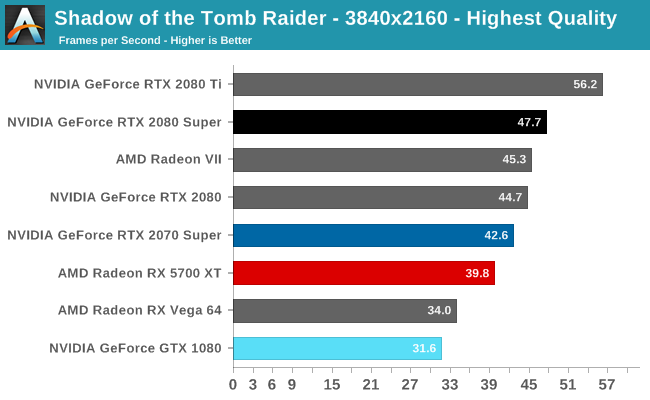

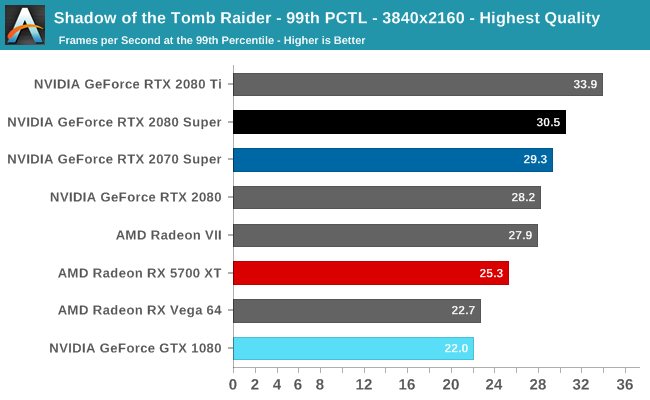
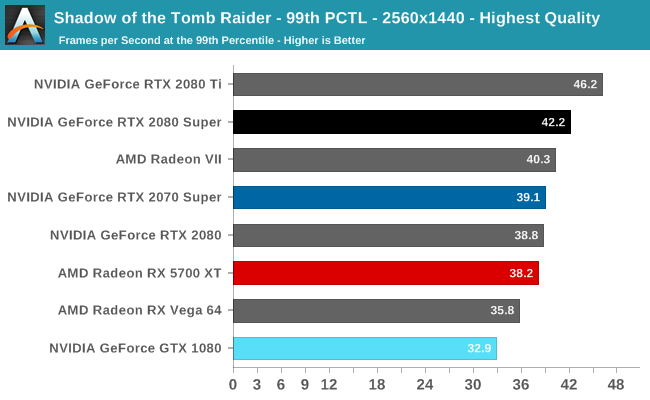
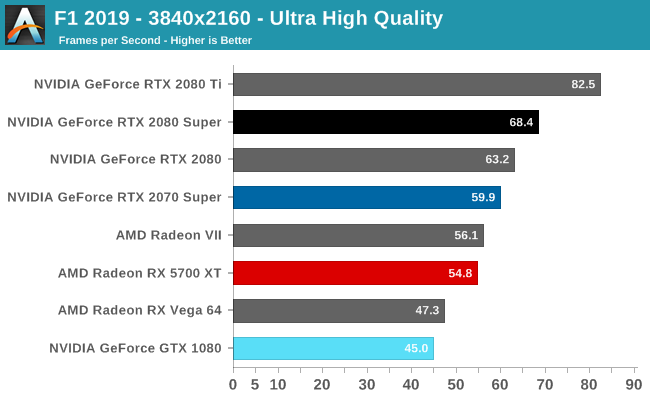
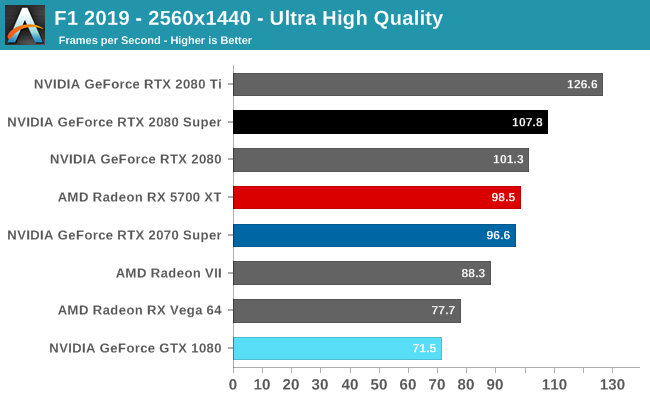

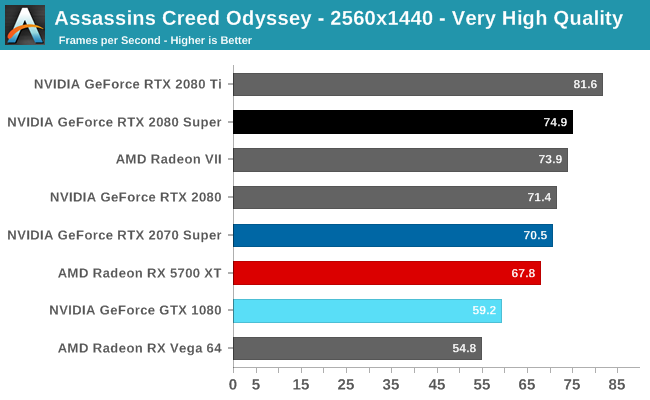
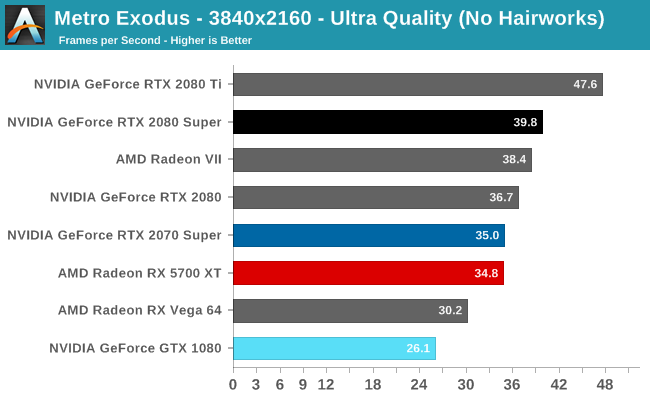
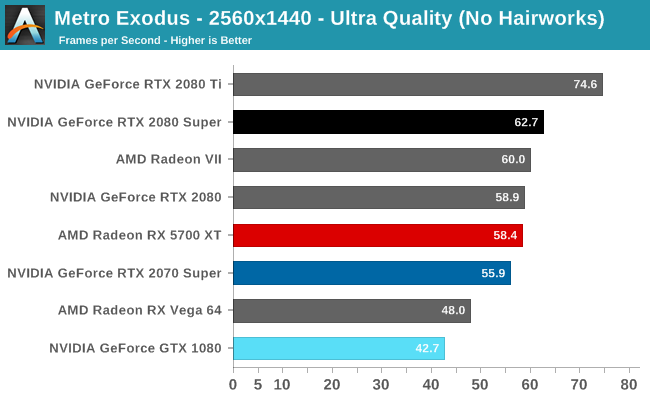
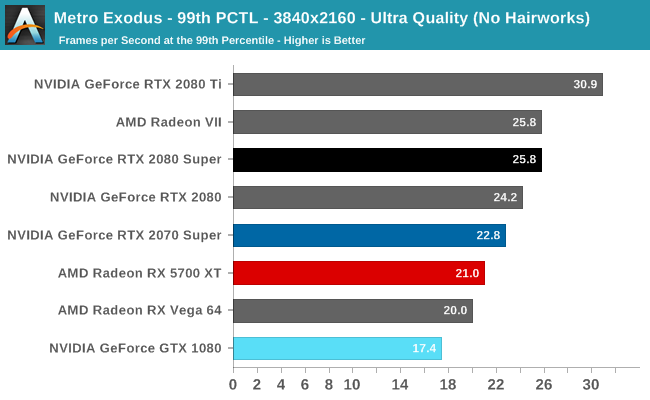
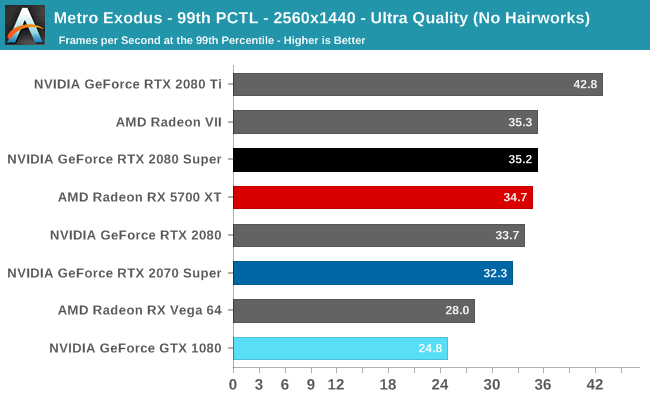
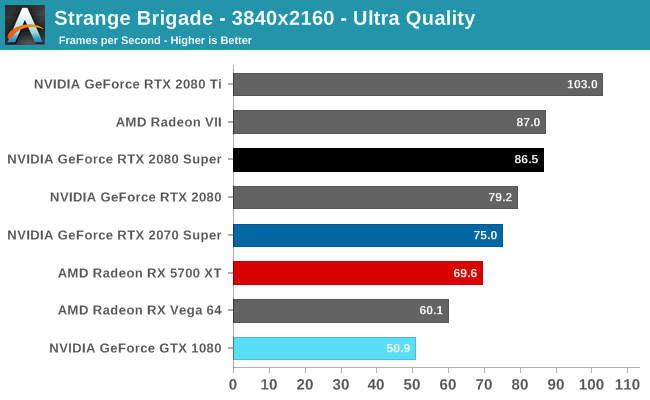
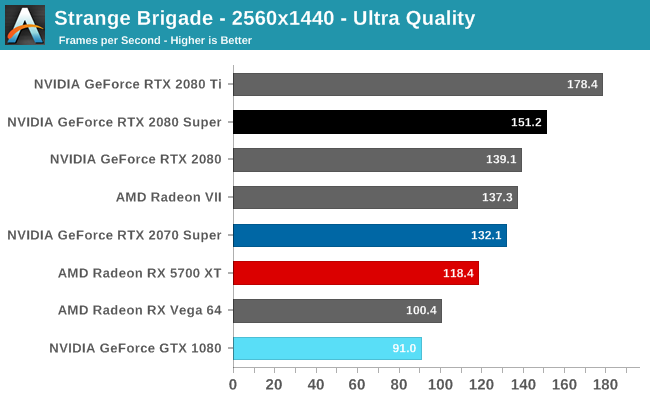
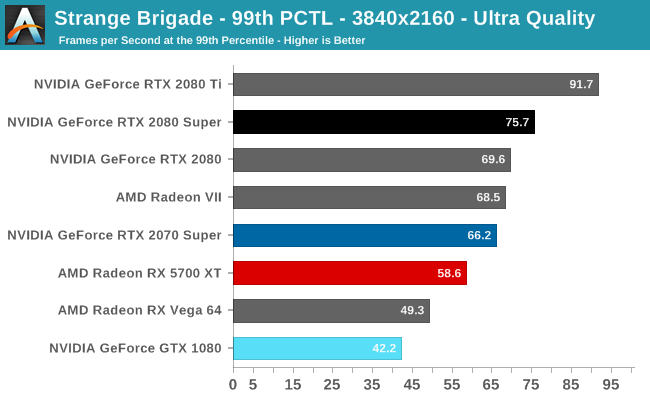
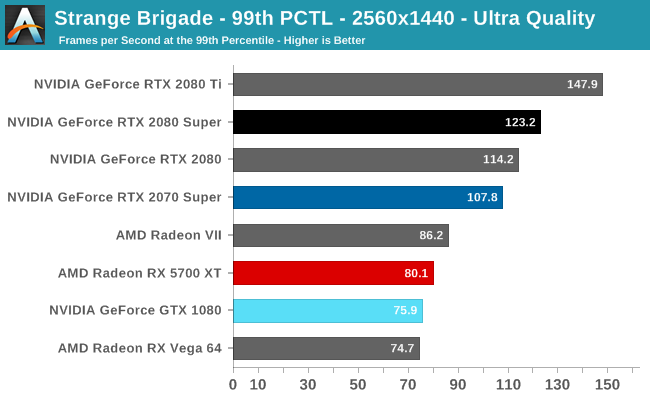
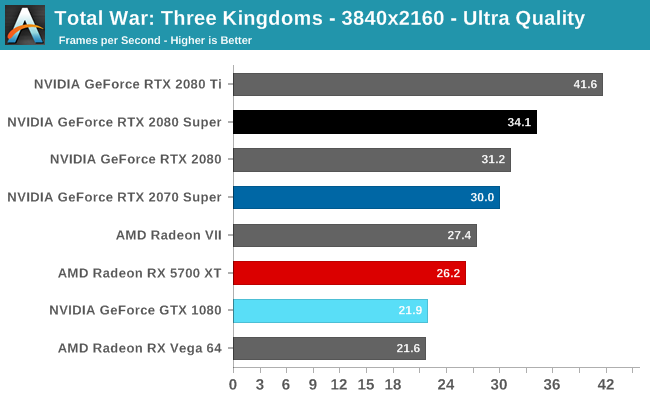
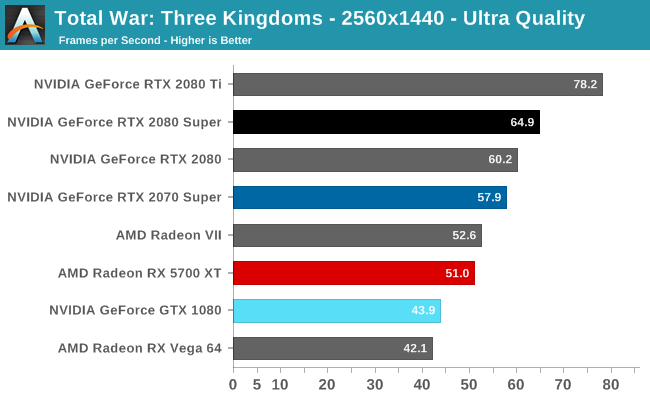
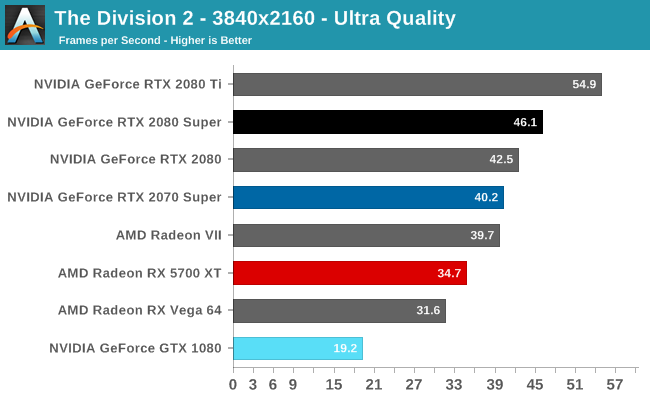
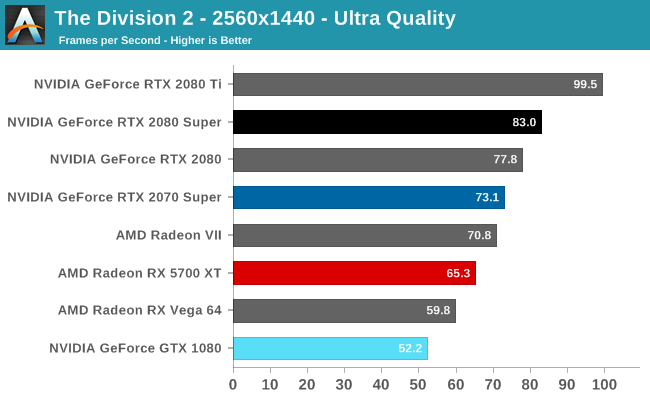
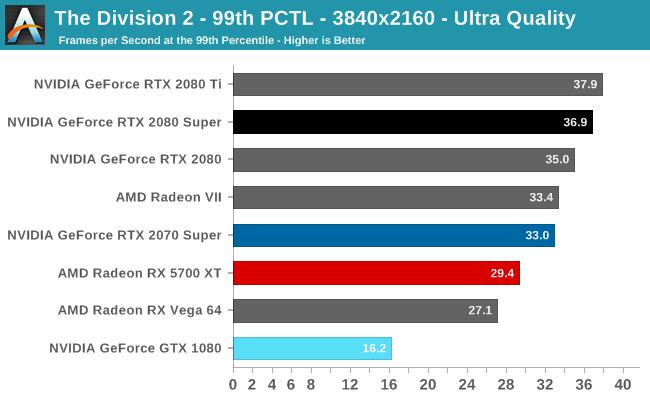
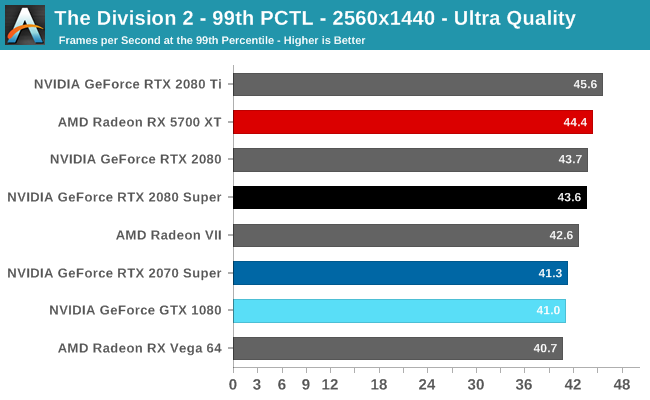
Now a truly venerable title, GTA V is a veteran of past game suites that is still graphically demanding as they come. As an older DX11 title, it provides a glimpse into the graphically intensive games of yesteryear that don't incorporate the latest features. Originally released for consoles in 2013, the PC port came with a slew of graphical enhancements and options. Just as importantly, GTA V includes a rather intensive and informative built-in benchmark, somewhat uncommon in open-world games.
The settings are identical to its previous appearances, which are custom as GTA V does not have presets. To recap, a "Very High" quality is used, where all primary graphics settings turned up to their highest setting, except grass, which is at its own very high setting. Meanwhile 4x MSAA is enabled for direct views and reflections. This setting also involves turning on some of the advanced rendering features - the game's long shadows, high resolution shadows, and high definition flight streaming - but not increasing the view distance any further.
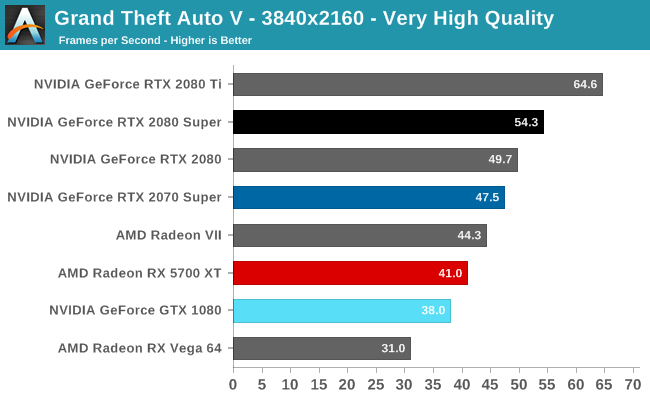
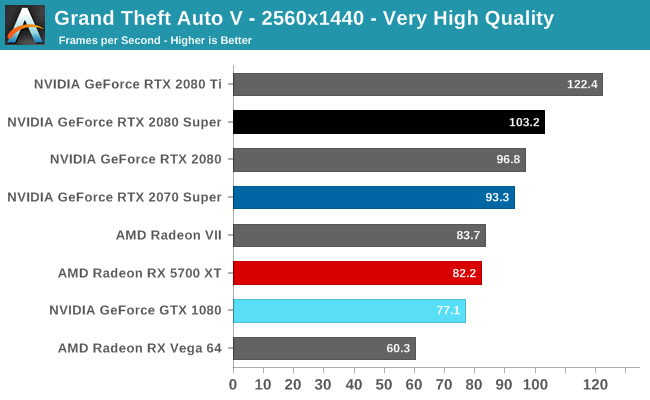
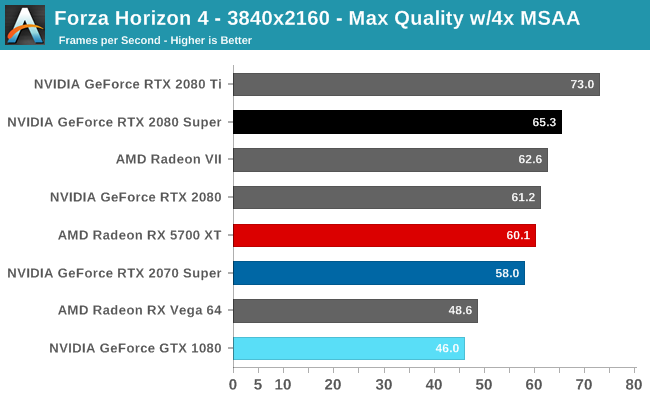

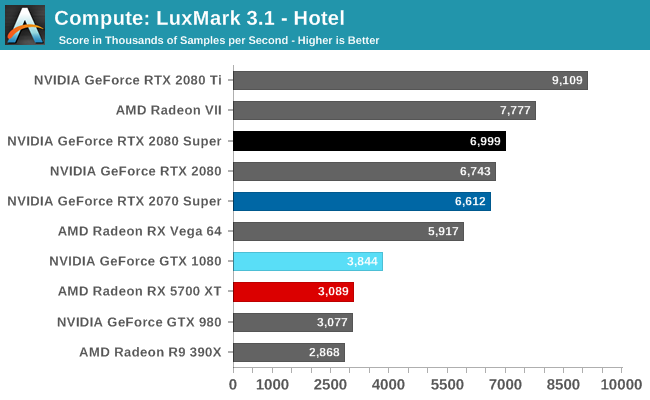
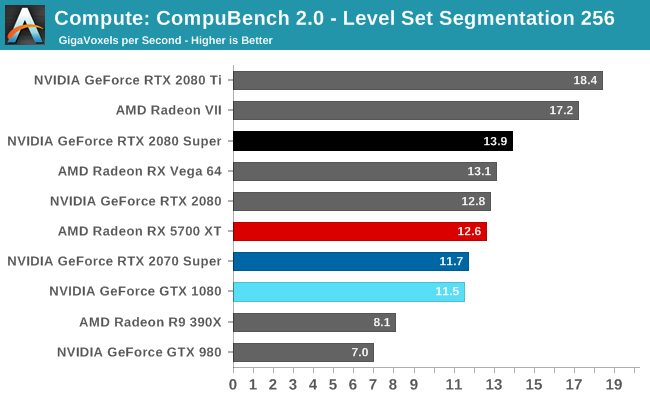
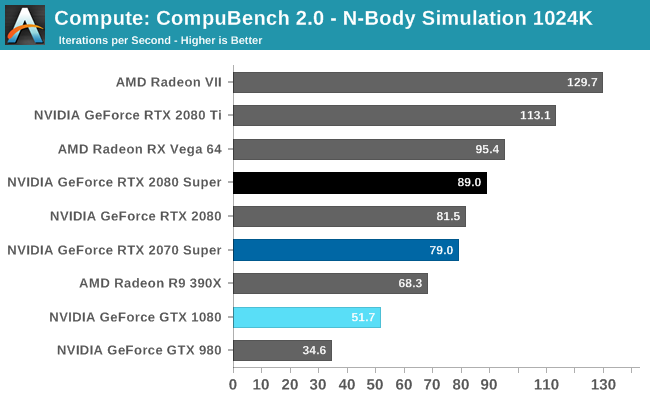

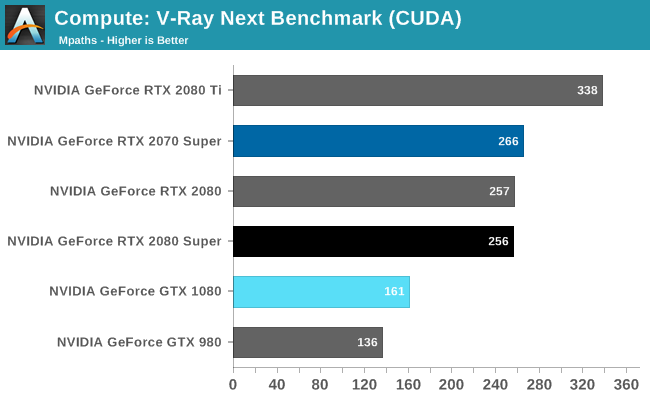




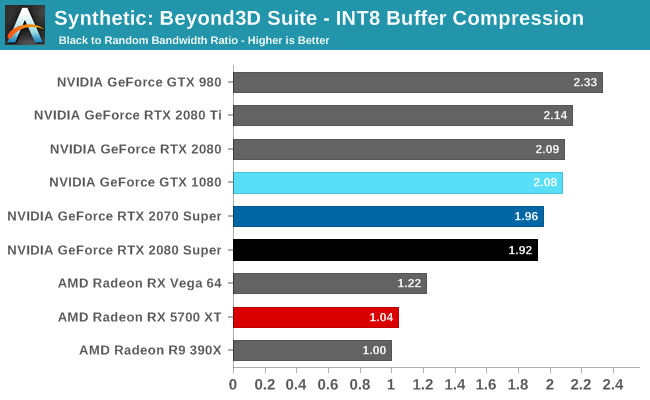
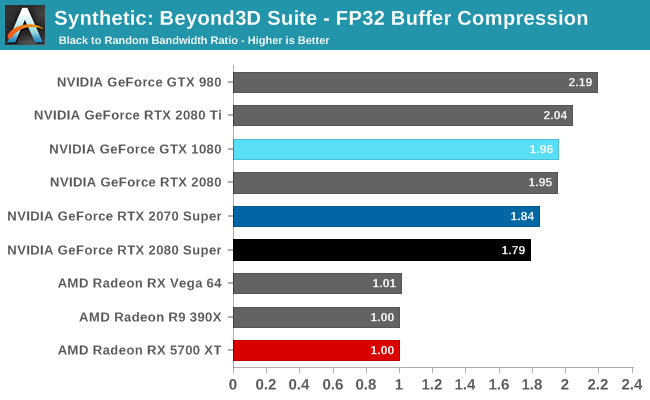
Last, but not least of course, is our look at power, temperatures, and noise levels. While a high performing card is good in its own right, an excellent card can deliver great performance while also keeping power consumption and the resulting noise levels in check.
| GeForce Video Card Voltages | |||||
| RTX 2080S Boost | RTX 2080S Idle | RTX 2080 Boost | RTX 2070S Boost | ||
| 1.05v | 0.65v | 1.05v | 1.043v | ||
Overall, the voltages being used for the RTX 2080 Super are not any different than NVIDIA’s other TU104 cards – or any of their other Turing cards, for that matter. At its highest clockspeeds the card runs at 1.05v, quickly stepping down to below 1v at lower clockspeeds. The 0.65v idle voltage is among the lowest we’ve ever recorded for an NVIDIA card, however.
| GeForce Video Card Average Clockspeeds | |||||
| Game | RTX 2080S | RTX 2080 Ti | RTX 2080 | RTX 2070S | |
| Max Boost Clock | 1965MHz | 1950MHz | 1900MHz | 1950MHz | |
| Boost Clock | 1815MHz | 1545MHz | 1710MHz | 1770MHz | |
| Tomb Raider | 1937MHz | 1725MHz | 1785MHz | 1875MHz | |
| F1 2019 | 1920MHz | 1725MHz | 1785MHz | 1875MHz | |
| Assassin's Creed | 1920MHz | 1800MHz | 1815MHz | 1890MHz | |
| Metro Exodus | 1937MHz | 1755MHz | 1785MHz | 1875MHz | |
| Strange Brigade | 1920MHz | 1695MHz | 1770MHz | 1875MHz | |
| Total War: TK | 1937MHz | 1740MHz | 1785MHz | 1875MHz | |
| The Division 2 | 1937MHz | 1635MHz | 1740MHz | 1845MHz | |
| Grand Theft Auto V | 1937MHz | 1815MHz | 1815MHz | 1890MHz | |
| Forza Horizon 4 | 1937MHz | 1815MHz | 1800MHz | 1890MHz | |
Looking at clockspeeds, we can piece together a couple of interesting pieces of information. On the clockspeed side, NVIDIA hasn’t actually changed the card’s maximum clockspeed all that much. Our RTX topped out at 1900MHz, and the RTX 2080 Super is only a bit higher at 1965MHz. That they’re doing it without more voltage is a bit more interesting – it looks like chip quality may have improved a bit over the past year – but not too surprising.
What is more surprising however are the average clockspeeds we recorded for the RTX 2080 Super. In short, the card spends a lot of time at or near its top turbo bins. With temperature compensation active, our RTX 2080 Super tops out at 1937MHz; a clockspeed that it holds at for over half of our games even at 4K. Quite frankly the RTX 2080 Super is almost a boring card in this respect (in a good way); there’s just not much in the way of power throttling going on here. If anything, the hard part is getting the card above 90-95% power usage.
This, ultimately, is why the RTX 2080 Super is as fast as it is versus the vanilla RTX 2080. The extra SMs help, but it’s the extra 100-150MHz on the GPU clockspeed that’s really driving the card.
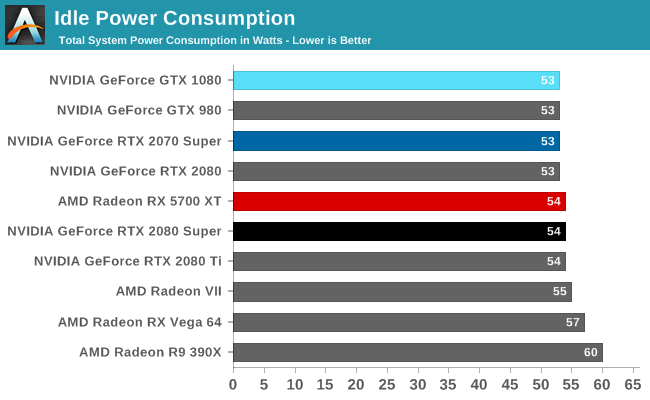
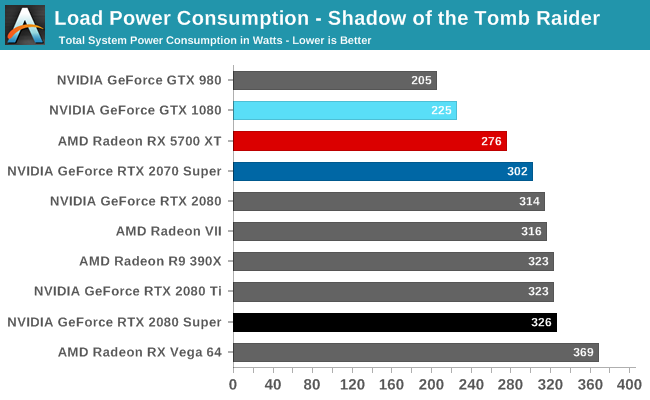
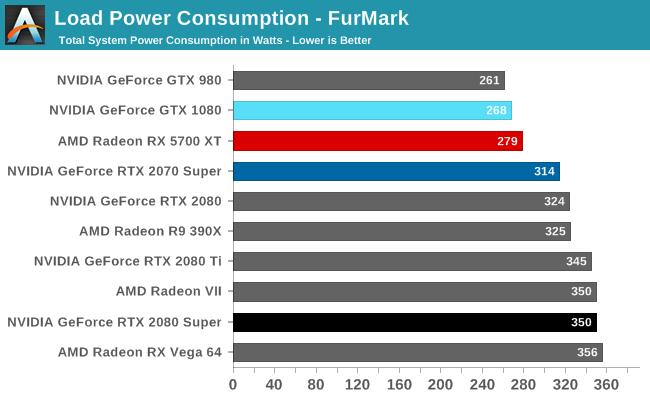
Getting to power consumption itself then, idle is effectively unchanged, exactly as we’d expect it. Load power, on the other hand, is paying the price for those 1900MHz+ clockspeeds. Under both FurMark and Tomb Raider, our RTX 2080 Super-equipped system is drawing almost the same amount of power as the RTX 2080 Ti system with a difference of just a few watts. That performance doesn’t come for free. NVIDIA’s overall power efficiency is still quite good here (the Radeon VII won’t be touching it, for example), but it’s clearly regressed a bit versus the RTX 2080 Ti and vanilla RTX 2080.
It is worth noting, however, that often the card was clockspeed-limited rather than power limited. So while Tomb Raider was specifically picked to be a punishing game – a task it delivered on here – I fully expect that the RTX 2080 Super is drawing a bit less than the RTX 2080 Ti in around half of our other games.
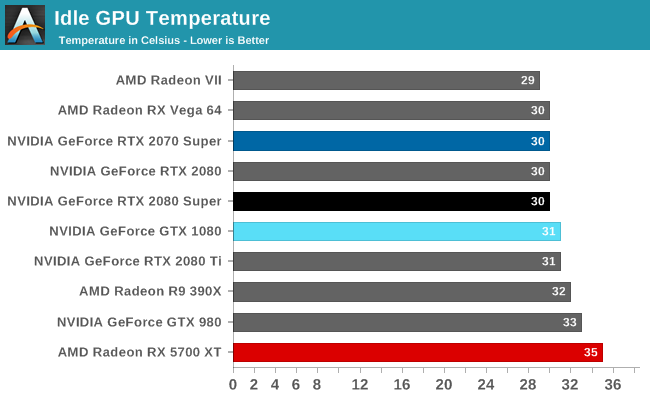
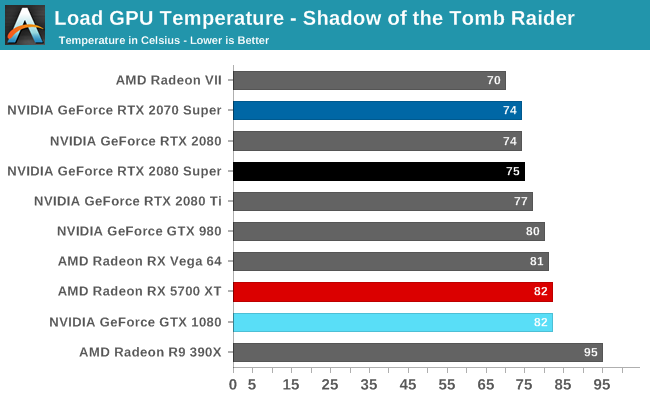
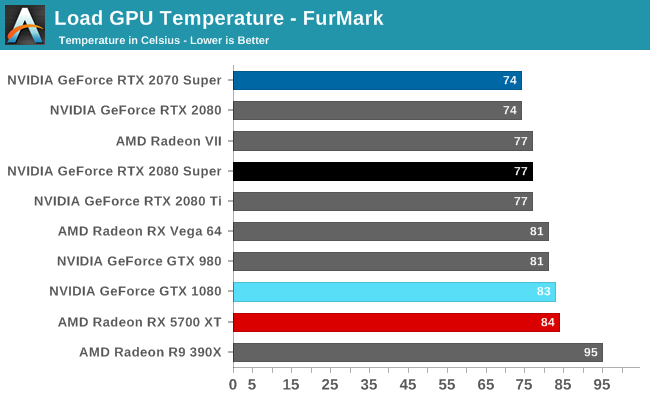
With higher power consumption and the same cooler comes higher temperatures. Even FurMark’s 77C is still several degrees below the card’s 84C thermal throttle point, but it is a very straightforward consequence of the increased power consumption.

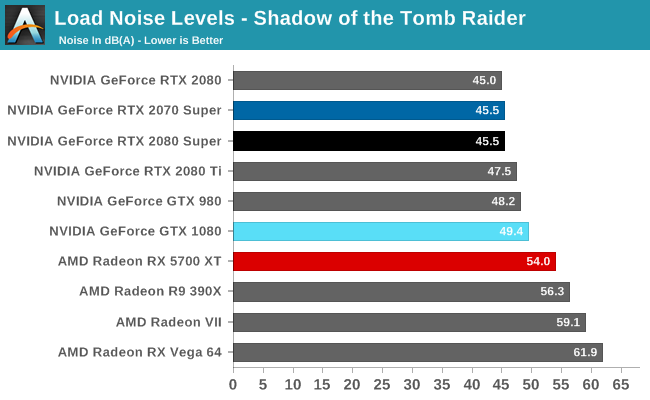
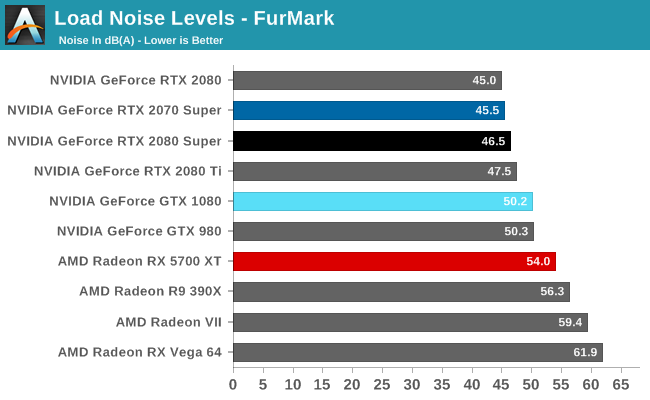
Last, but not least, we have noise. Again this is the same cooler as the RTX 2080 & RTX 2080 Ti, so the card has to work a bit harder to keep itself cool versus the original RTX 2080. The net result is that the RTX 2080 Super splits the difference between the original RTX 2080 and the RTX 2080 Ti, peaking at 46.5 dB(A). This is unlikely to be a very noticeable change as compared to the RTX 2080, but it’s louder none the less. I’m actually a bit surprised it didn’t pull even with the RTX 2080 Ti, but then our RTX 2080 Ti seems to run just a bit loud period – even at idle it’s a bit louder.
All things considered, it’s been a while since we’ve had anything approaching a complete mid-generation refresh from NVIDIA. After doing 2-year cycles with the GeForce 900 and GeForce 10 series, the company could seemingly do it again with the 20/16 series – and certainly, that’s where their GPU development cadence lies. However the launch of AMD’s capable Radeon RX 5700 series of cards, not to mention the slugging sales of the original GeForce 20 series cards, has changed all of this just enough to give NVIDIA a good reason to release a refreshed line of cards. And of the three Super cards, today we’re finally seeing the fastest of them all, the GeForce RTX 2080 Super.
None of the Super cards are meant to dramatically change NVIDIA’s product stack, and for the RTX 2080 Super, this is especially the case. The RTX 2060 Super and RTX 2070 Super are NVIDIA’s answer to the new Radeon cards, so the RTX 2080 Super isn’t strictly necessary. However because NVIDIA used what amounts to a slightly scaled-back RTX 2080 for the new RTX 2070 Super, in the process they made the original RTX 2080 redundant; at $200 cheaper, it’s the clear choice if compared to that original card. Which means that if NVIDIA is going to even offer a card between the RTX 2070 Super and RTX 2080 Ti – and specifically, to keep the $699 price point viable – they needed something at least a bit faster than the RTX 2080. And they’ve delivered just that in the RTX 2080 Super.
To be sure, the RTX 2080 Super is the smallest performance jump of any of the Super cards. While the other cards delivered around 15% better performance per dollar than their vanilla predecessors, the RTX 2080 Super is only about half that, at 8%. Which is enough to be meaningful and enough to justify a new SKU (especially with the hardware changes), but it’s not a card that changes the video card calculus significantly. Instead, it’s exactly what it says on the tin: a slightly faster 2080 delivering a bit more performance (and performance per dollar) than before.
Buried inside of this – and making an otherwise by-the-books launch into something a bit more interesting – is NVIDIA’s choice of VRAM. 16Gbps GDDR6 has been on the development roadmaps for quite some time, and now we finally have a video card using it. Bumping up their memory frequency – even if it’s just to 15.5Gbps – was a good choice to ensure that the card remained well-fed after NVIDIA turned up the clocks on the fully-enabled TU104 GPU.
And looking at the broader picture, this is one of those small but important steps in ensuring that video card performance continues to grow over the coming years. With everyone seemingly done launching cards for now, I’m not sure we’ll see 16Gbps memory show up anywhere else, but it’s a good sign that come 2020, Samsung and the other memory manufacturers will be ready to deliver much-needed higher capacity memory at the same 16Gbps speeds.
Meanwhile, if there is a downside to the RTX 2080 Super from a technical perspective, it’s power consumption. The 250W TDP card actually struggles a bit to chow down on all 250 Watts, so in the real-world the card isn’t always as thirsty as the paper specs say. However it’s still requires more power than the RTX 2080 vanilla, and the increase is more than the associated 8% performance increase. So NVIDIA’s overall power efficiency on this card, while still reasonably good, is lower than other high-end Turing cards.
| Performance Summary (4K) | |||||
| Price | Relative Performance | Relative Perf-Per-Dollar |
|||
| RTX 2080 Super vs. RTX 2080 | $699 | +8% | +8% | ||
| RTX 2080 Super vs. RTX 2070 Super | $499 | +13% | -19% | ||
| RTX 2080 Super vs. RTX 2080 Ti | $1150 | -15% | +39% | ||
| RTX 2080 Super vs. GTX 1080 | $499 | +60% | +14% | ||
| RTX 2080 Super vs. Radeon RX 5700 XT | $399 | +24% | -29% | ||
As for what all of this means for video card buyers then, the situation remains relatively straightforward. AMD’s Radeon VII never really got traction in this space, and the RTX 2080 Super will clear the field. At $699, it’s the best option by far, and as a result it’s really the only option.
Instead, the lingering question is the cards below and above the RTX 2080 Super, namely the RTX 2080 Ti, RTX 2070 Super, and AMD’s Radeon RX 5700 XT. As far as the RTX 2080 Ti is concerned, it’s still a distinctly faster card, delivering around 18% better performance at 4K, and all at the same power consumption, no less. It’s also $450 more expensive, which was hard to justify before the RTX 2080 Super launched, and is even harder to justify post-Super. That card has its place in the world – it is after all the fastest GeForce – but it’s definitely a card you buy only if you can truly part with the money. Otherwise, the RTX 2080 Super is a bit of a spoiler, which its much better performance-per-dollar ratio.
Equally spoiling matters from the other end, however, are the RTX 2070 Super and Radeon RX 5700 XT. These cards are distinctly slower than the RTX 2080 Super – the 2080 leads the 2070 by 14%, for example – but then they’re $200 and $300 cheaper respectively. As a result, while they aren’t in the same performance tier, they offer even better performance for the money than the RTX 2080 Super. Spoilers are always hard to assign an absolute value to, but I will say that the RTX 2080 Super is almost overpowered for 1440p; at least unless you’re using a high refresh rate display.
As for gamers looking for an upgrade, the limited performance bump on the RTX 2080 Super means that things haven’t really changed here. GeForce 10 series owners who are looking to spend no more than they did last time can easily stay put. Meanwhile the original RTX 2080 was already a solid upgrade for the GTX 980 (Ti), and the RTX 2080 Super improves on that a bit. The GTX 980 Ti launched at almost the same price point, and with the RTX 2080 Super offering almost 2x the performance, it fits the usual upgrade cadence well. The same goes for upgrades from AMD’s Radeon Fury cards, for that matter.
Past that, it seems like after two months of tit-for-tat, the video card industry may be ready to take its own summer vacation. AMD has made their big move, and NVIDIA hasn’t announced any more Super cards. I don’t expect that we’re going to be done for the year – there still needs to be lower-end AMD Navi cards at some point – but barring any more surprises, it looks like the high-end of the market has fallen into place for the next several months. It’s still very much NVIDIA’s market, but the fact that we’re even talking about a refreshed RTX 2080 card means that things have changed, and that they’ve changed for the better.
https://www.anandtech.com/show/14663/the-nvidia-geforce-rtx-2080-super-review
2019-07-23 14:00:00Z
52780338018466
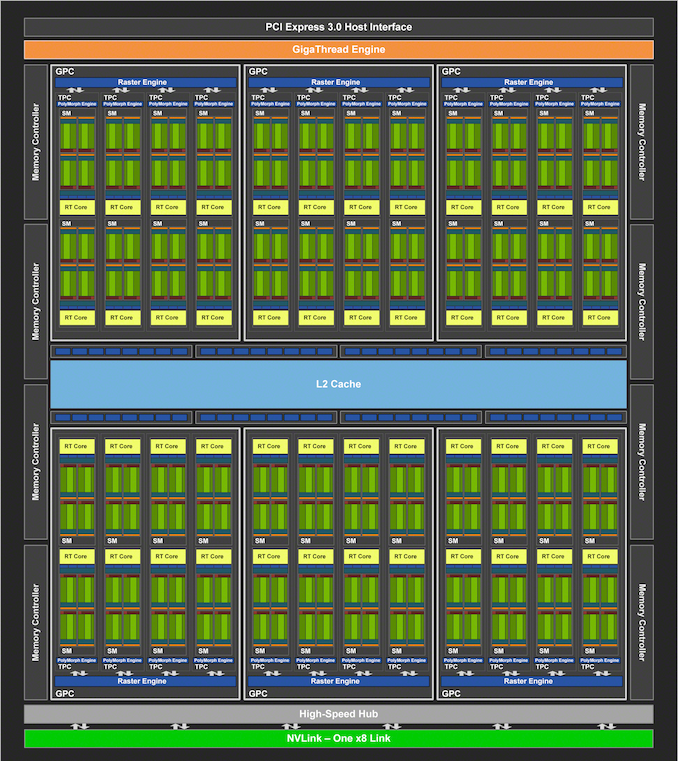
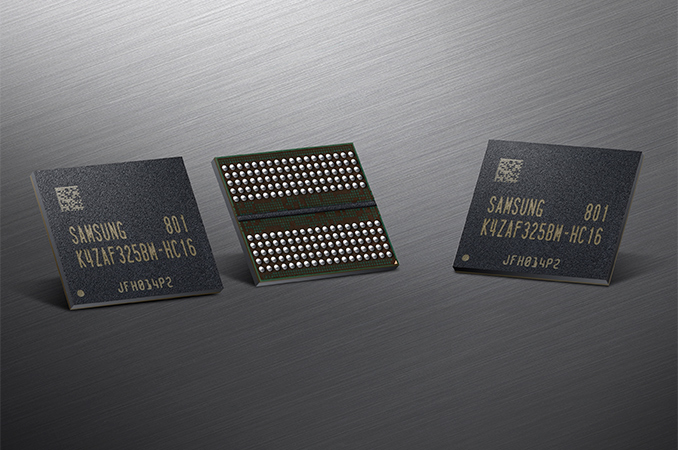
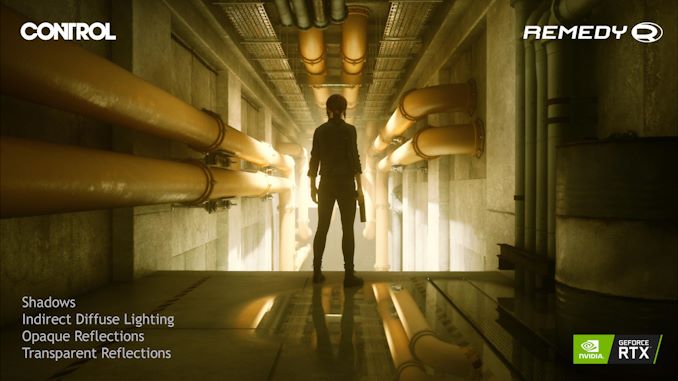
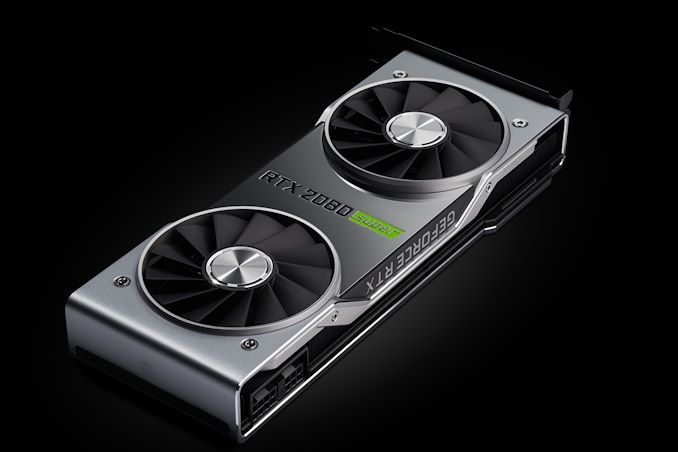
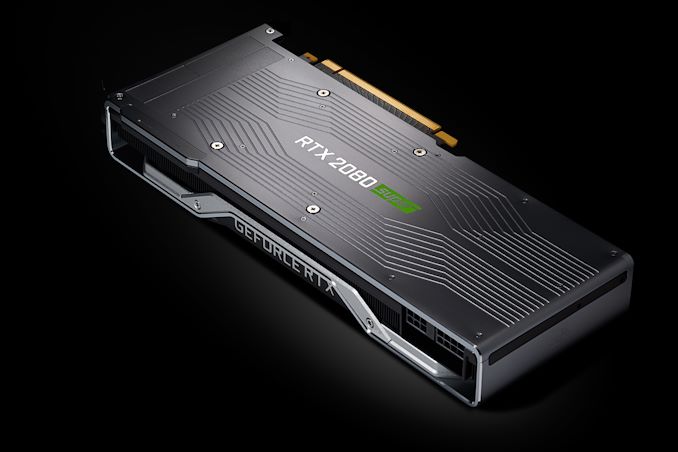
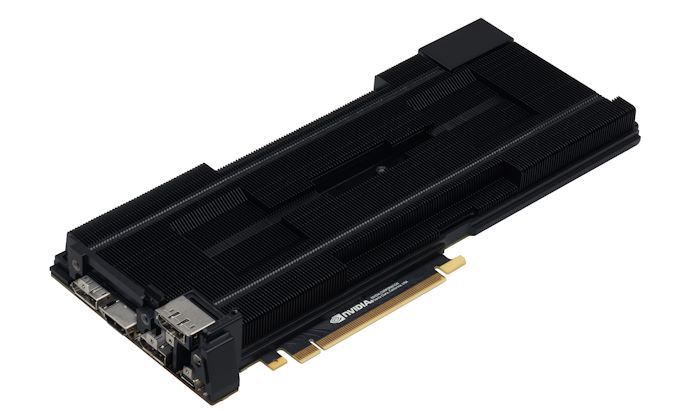

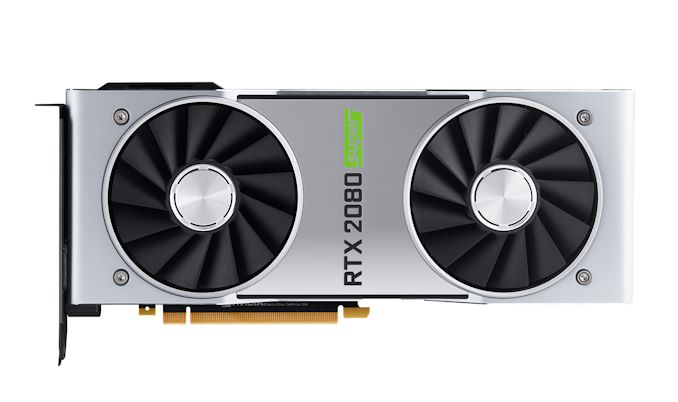
Tidak ada komentar:
Posting Komentar